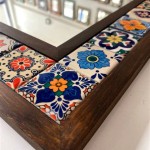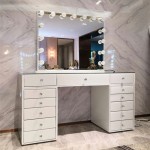Light Strips for Mirrors: Illuminating Your Reflection
Mirror lighting plays a crucial role in both residential and commercial spaces. It provides essential illumination for tasks like applying makeup, shaving, or checking one's appearance. Traditional overhead lighting can sometimes cast unflattering shadows, making accurate grooming and styling difficult. Light strips offer a modern and versatile solution to this challenge, providing even, diffused light that enhances visibility and adds a touch of elegance to any mirror.
Types of Light Strips for Mirrors
Several types of light strips are suitable for mirror applications. LED (Light Emitting Diode) strips are the most common choice due to their energy efficiency, long lifespan, and compact size. LED strips are available in a wide range of color temperatures, from warm white to cool white, allowing users to customize the lighting to their preference. Other options include neon flex strips, which offer a vibrant and colorful aesthetic, and incandescent strips, which provide a traditional warm glow, though they are less energy-efficient than LEDs.
Choosing the Right Color Temperature
Selecting the appropriate color temperature is crucial for achieving the desired effect. Warm white (2700-3000K) creates a cozy and inviting atmosphere, suitable for bathrooms and bedrooms. Cool white (4000-5000K) provides a brighter, more energizing light, ideal for task-oriented areas like vanity mirrors. Daylight (5000-6500K) mimics natural sunlight and offers the most accurate color rendering, making it the preferred choice for makeup application.
Installation Methods for Mirror Light Strips
Installing light strips around a mirror can be achieved through various methods. Adhesive backing on most LED strips allows for easy attachment directly to the mirror frame or the wall surrounding it. For a more concealed look, light strips can be installed inside a recessed channel or within the frame itself. This creates a clean, professional finish and prevents direct exposure to the LEDs, further diffusing the light. For complex installations, consulting a qualified electrician is recommended.
Powering Your Light Strips
Light strips require a power source, typically a low-voltage transformer. The transformer converts standard household voltage to the lower voltage required by the LEDs. Transformers can be plugged into a standard outlet or hardwired for a more permanent installation. Some light strips offer smart features, allowing control via a mobile app or voice assistants. These smart strips often include dimming capabilities and color-changing options, providing greater flexibility and customization.
Benefits of Using Light Strips for Mirrors
Beyond their aesthetic appeal, light strips offer several practical benefits. They provide even illumination, eliminating shadows and enhancing visibility for tasks like grooming and makeup application. The energy efficiency of LED strips translates to lower electricity bills and a smaller environmental footprint. Their long lifespan reduces the need for frequent replacements, saving time and money. Furthermore, the compact size and flexibility of light strips allow for versatile placement and customization, making them suitable for a wide range of mirror shapes and sizes.
Safety Considerations for Mirror Light Strip Installations
When installing light strips around mirrors, particularly in bathrooms, safety should be a primary concern. Ensuring that all electrical connections are properly insulated and protected from moisture is crucial. Using low-voltage lighting systems further minimizes the risk of electrical shock. It's also essential to choose light strips with appropriate ingress protection (IP) ratings for bathroom environments. IP ratings indicate the level of protection against dust and moisture. For areas exposed to water splashes, a minimum IP rating of IP44 is recommended. If the light strips will be in direct contact with water, a higher IP rating, such as IP67, is necessary.
Maintenance and Cleaning
Maintaining the cleanliness and functionality of mirror light strips is relatively straightforward. Regularly dusting the strips with a soft cloth can prevent the buildup of dust and debris, which can affect light output. For more thorough cleaning, use a slightly damp cloth and mild detergent, ensuring that the power is disconnected before cleaning. Avoid using abrasive cleaners or solvents, as these can damage the light strips. Regularly inspecting the wiring and connections for any signs of wear or damage can help prevent potential safety hazards.

How To Diy Vanity Mirror With Led Strip Lights

How To Diy Led Light Strips For Mirror Ledyi Lighting

How To Diy Vanity Mirror With Led Strip Lights

Diy Led Light Strips For Mirror Practical Advice Nakashi Lighting

How To Diy Vanity Mirror With Led Strip Lights

Best Led Strip Lights For Mirror Manufacturer Light China Supplier

How To Diy Led Light Strips For Mirror Ledyi Lighting

How To Diy Vanity Mirror With Led Strip Lights

How To Diy Led Light Strips For Mirror Ledyi Lighting

Diy Led Light Strips For Mirror Useful Tips Elstarled








